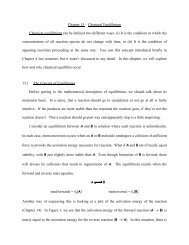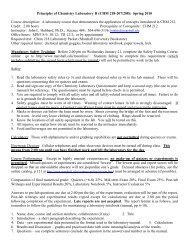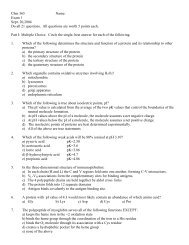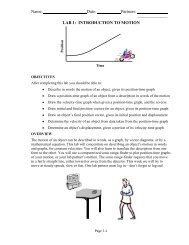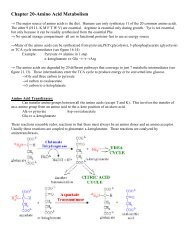THE DHAMMAPADA: THE WAY OF THE BUDDHA, VOL. 9-12 The ...
THE DHAMMAPADA: THE WAY OF THE BUDDHA, VOL. 9-12 The ...
THE DHAMMAPADA: THE WAY OF THE BUDDHA, VOL. 9-12 The ...
Create successful ePaper yourself
Turn your PDF publications into a flip-book with our unique Google optimized e-Paper software.
<strong>THE</strong> <strong>DHAMMAPADA</strong>: <strong>THE</strong> <strong>WAY</strong> <strong>OF</strong> <strong>THE</strong> <strong>BUDDHA</strong>, <strong>VOL</strong>. 9-<strong>12</strong> 231<br />
cross became primary. Because he was crucified, because he suffered, he caught their attention. <strong>The</strong>re are people<br />
who are always interested in suffering, in misery, in death.<br />
My interest is not death, my interest is life. I love life unconditionally. I celebrate death too, just because it<br />
is part of life not as death but as part of life, as the finishing touch, as the crescendo, as the ultimate flowering<br />
of life. If you have lived rightly, your death is a beautiful phenomenon. But my interest basically, intrinsically, is<br />
life.<br />
<strong>The</strong> mala represents life, the cross represents death. <strong>The</strong> mala represents a certain art of making life a garland.<br />
<strong>The</strong> beads are the moments. Each bead has to be perfect; each moment has to be lived in its perfection. And<br />
there is a thread running through them which is invisible, passing through each bead; that thread is of eternity.<br />
Each moment is threaded with eternity.<br />
Unless your life knows what eternity is your life will be just a heap of beads or a heap of flowers, but it will not<br />
be a garland, it will not be a mala. It will not have any inner harmony the beads will remain unrelated. It will<br />
be a chaos, it will not be a cosmos; there will be no order, no discipline. But the discipline should be invisible like<br />
the thread.<br />
And how does one come to know eternity? <strong>The</strong> only way to know the thread is to go inside the bead. <strong>The</strong>re,<br />
at the very center of the bead, you will find the thread passing. Going deep into each moment, going totally into<br />
it, you will find eternity. Each moment is part of an eternal procession, of an eternal celebration.<br />
<strong>The</strong> mala represents time as beads, visible, and the thread as eternity, the invisible. <strong>The</strong>re are one hundred and<br />
eight beads in the mala. One hundred and eight beads represent one hundred and eight methods of meditation;<br />
all the methods of meditation can be reduced to one hundred and eight one hundred and eight methods are the<br />
fundamental methods of meditation. <strong>The</strong>n they can have thousands with little differences, little changes joining<br />
two methods or three methods or a few parts of one method and a few parts of another method. One can make<br />
as many methods as possible, but the fundamental methods are one hundred and eight.<br />
<strong>The</strong> mala has one hundred and eight beads and a locket with a picture of somebody... nobody knows who he<br />
is. Somebody anonymous, somebody who is more a nobody than a somebody; a man who has died long ago as a<br />
separate entity, who does not exist anymore as an ’I’ but is only an open space. That is where you have to reach,<br />
that is where you have to arrive. That is your ultimate home.<br />
<strong>The</strong> mala is not a cross. Christianity worships death and that is where it has gone wrong. It has lost the joy<br />
of life, the laughter, the humor. It has lost contact with Jesus. It goes on worshipping the crucified Jesus, but it<br />
is not capable of worshipping the alive Jesus.<br />
And my effort here is to help you to worship life, to live so joyously, with such humor, that your life becomes<br />
a dance. I don’t want you to become sad and serious sincere of course, but serious, never. I would like you to<br />
go deeper into existence. Dance with the flowers! Have dialogues with the stars! Look into people’s eyes and love<br />
and don’t hold back. <strong>The</strong> only unspiritual people are those who are holding back, who are living in a miserly way,<br />
who are living only partially, fragmentarily, who are not integrated.<br />
And don’t live an accidental life; let there be a thread running through it. <strong>The</strong> Sanskrit word for thread is sutra.<br />
That’s why these great sayings of Buddha, Patanjali, Krishna, Mahavira are called sutras: these are threads. If<br />
you understand them your life will not remain just a heap, an accidental heap. You will not be just driftwood<br />
at the mercy of unconscious forces. Your life will become a conscious movement, your life will become an art. It<br />
will have a sense of direction, and each act will be connected with every other act of your life. You will not be<br />
accidental. If you are accidental you will be only a noise; if you are not accidental you can become music.<br />
<strong>The</strong> mala represents music, it represents harmony. It shows that you have found the sutra, the thread that<br />
makes your life one whole, one piece. Life is beautiful when it is one piece; life is ugly when it is fragmentary<br />
when you are just a crowd and when the crowd is always fighting within you, when there is always a civil war.<br />
Of course, the cross has influenced humanity very much, because millions of people find meaning in the cross<br />
because it fits with their lives. <strong>The</strong>ir lives are almost on the cross: they are living in agony, they have never tasted<br />
what ecstasy is.<br />
It is not an accident that Krishna’s message has not reached millions. Just the other day I was telling you<br />
that Zarathustra has not reached millions for the simple reason that he loved life. Jesus has reached millions<br />
not because of himself but because of an accident in his life. It is because of the Jews and the Romans: if they<br />
had not crucified him, if they had tolerated him, he would have died by himself and then nobody would have<br />
heard anything about him. All these churches and thousands of monks and nuns would not have been seen at all<br />
they gathered around the cross. <strong>The</strong> cross became significant because it synchronizes with something in their life.<br />
<strong>The</strong>ir life is of suffering and the cross represents it. <strong>The</strong>y are also on the cross. <strong>The</strong>ir whole life is agony, their<br />
whole life is hell.



